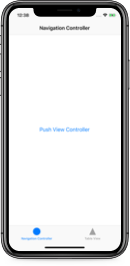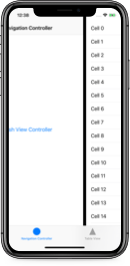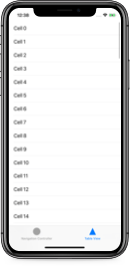TabBarPageController
TabBarPageController is a container view controller that manages navigation between pages of content. Each page is represented by a child view controller embedded in a UIPageViewController instance, allowing users to navigate between pages by either selecting tab bar items or swiping left and right.
Usage
Create a TabBarPageController instance and add view controllers to it:
let tabBarController = TabBarPageController()
tabBarController.addViewController(viewController)Show a specific view controller:
tabBarController.showViewController(viewController)You can configure the appearance of tab bar items by changing the child view controllers' UITabBarItem values.
Although TabBarPageController is similar to UITabBarController, it's not a drop-in replacement and includes a number of important differences:
TabBarPageControlleralways hides the tab bar when a child navigation view controller pushes a new view controller. This is to avoid interfering with the navigation controller's back navigation gesture.- Editing and the "more" navigation controller are not supported.
Example
An example project is included under the /Example directory.
Requirements
Requires iOS 13.0 or greater.
Installation
TabBarPageController can be installed using the following methods:
Swift Package Manager (Recommended)
TabBarPageController is available through the Swift Package Manager. To use TabBarPageController with SPM, add https://github.com/conmulligan/TabBarPageController.git as a dependency.
CocoaPods
TabBarPageController is available through CocoaPods. To install it, add the following line to your Podfile:
pod 'TabBarPageController'Manual Installation
You can also just copy the TabBarPageController.swift file into your project.
License
TabBarPageController is available under the MIT license. See the LICENSE file for more info.





